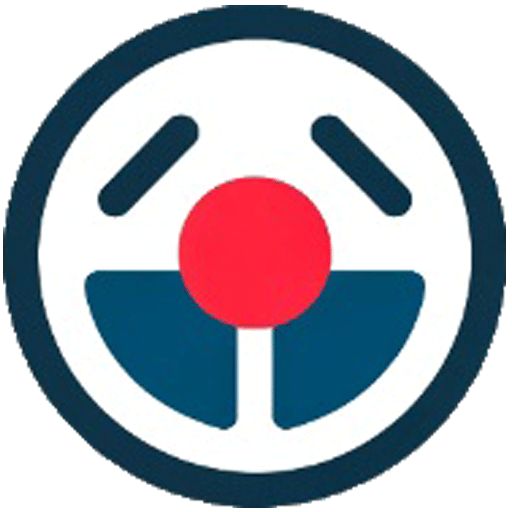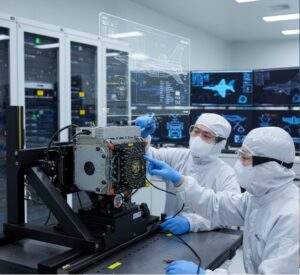K-Defense LIG Nex1
When global defense analysts discuss South Korea’s staggering export success, the conversation inevitably turns to two names: Hanwha, for its K9 “Thunder” artillery and K2 “Black Panther” tanks, and KAI, for its FA-50 light combat aircraft. They are the visible, heavy-metal face of K-Defense.
But from a perspective in Seoul, this focus, while understandable, misses the true technological core driving Korea’s ambition. While Hanwha and KAI build the platforms, another firm—a “quiet giant”—builds the high-tech systems that give them their lethal edge.
That giant is LIG Nex1.
While headlines track the multi-billion dollar platform sales, LIG Nex1 is quietly securing its own massive contracts for systems that were once the exclusive domain of American and European defense primes. This isn’t just another defense firm; it is the R&D heart of Korea’s precision-guided munitions (PGM), advanced radar, and electronic warfare (EW) capability. It is pursuing a deliberate, high-margin global strategy that is critical to understanding the next phase of K-Defense’s global rise.
Beyond Tanks & Jets: What LIG Nex1 Actually Does
To understand LIG Nex1’s unique position, one must look at its origins. Born from the legendary high-technology R&D culture of the LG Group, LIG Nex1 was cultivated for decades as South Korea’s national champion for its most complex guided systems. It was, and is, the primary high-tech partner for the government’s Agency for Defense Development (ADD) and the Defense Acquisition Program Administration (DAPA).
While its competitors focus on integrating entire platforms, LIG Nex1 thrives in deep-tech.
The Three Pillars of Deep-Tech
LIG Nex1’s expertise is concentrated in three critical, high-barrier-to-entry domains:
- Precision Guided Munitions (PGM): This is LIG’s crown jewel. It produces everything from the Hyun-Gung (Raybolt) “fire-and-forget” anti-tank guided missile (ATGM) to the advanced Cheongung II (M-SAM) surface-to-air missile.
- ISR & Radar: LIG Nex1 develops the “eyes” of the Korean military. This includes advanced 3D surveillance radars, satellite components, and, most critically, the Active Electronically Scanned Array (AESA) radar for Korea’s indigenous KF-21 Boramae fighter jet.
- Electronic Warfare (EW) & C4I: This high-margin domain includes signal intelligence suites, jammers, and the complex command-and-control networks that tie the battlefield together.
This specialization means that domestically, LIG Nex1 is the go-to partner for DAPA’s most sensitive projects. But what analysts in Korea find most compelling is how this deep R&D focus is now shaping the internal competitive landscape.
An Insider’s Look: The LIG Nex1 vs. Hanwha System Rivalry
Publicly, K-Defense often presents a united “Team Korea” front at global trade shows. From Seoul, however, the picture is far more complex and intensely competitive. The internal rivalry for DAPA contracts, especially between LIG Nex1 and the rapidly consolidating Hanwha Group, is fierce.
Deconstructing the “Team Korea” Myth
This dynamic is completely missed by most Western media. Hanwha, having amassed a defense empire spanning artillery, aerospace, and shipbuilding, is aggressively pushing to become a vertically integrated “one-stop-shop.” It is building its own launcher systems, acquiring sensor technology, and developing in-house missile capabilities to complement its platforms.
A Head-to-Head Battle for R&D Dominance
LIG Nex1’s strategy is the opposite: it argues that it is the “pure-play” specialist with deeper, unrivaled R&D expertise in the high-tech domains that matter most.
What analysts in Seoul are observing is a head-to-head battle for the soul of Korea’s next-generation defense R&D. When DAPA issues a new contract for a next-generation missile or radar system, these two titans clash. This internal pressure, far from being a weakness, is a primary driver accelerating LIG’s technological development and forcing it to hone its export competitiveness. It cannot rest on its laurels as a domestic champion; it must constantly prove it is more innovative than its domestic goliath rival.
Decoding the Global Strategy: High-Margin, High-Tech
This internal pressure has forged an external strategy focused on high-margin, high-tech systems—and it’s working. The proof is in its recent, massive export successes, which have rewritten the rules for K-Defense.
Case Study: The M-SAM Megadeals
The most significant of these are the multi-billion-dollar contracts for its M-SAM (Cheongung II) medium-range surface-to-air missile system.
In 2022, LIG Nex1 finalized a landmark $3.5 billion deal with the United Arab Emirates for the M-SAM. This was followed by a $3.2 billion deal with Saudi Arabia announced in early 2024.
The “Tier-1 Alternative” Niche
It is vital to understand why these deals are a game-changer. LIG Nex1 did not win by simply being the cheapest option. It won by beating established Western, Israeli, and Russian competitors on performance, integration, and technological capability. The M-SAM, often dubbed the “Korean Patriot,” offers near-peer performance in intercepting complex aerial threats.
Domestic reporting in Korea framed these wins as a graduation. K-Defense was no longer just exporting hardware; it was now a Tier-1 provider of one of the most complex systems in modern warfare: integrated air defense. LIG’s strategy is clear: it targets nations seeking near-US-level technology but desiring a more flexible, rapidly deliverable, and politically neutral supply chain.
Analyst Outlook: What to Watch Next
From a Seoul insider’s perspective, LIG Nex1’s trajectory is now one of the most important indicators for the future of K-Defense. Investors and procurement officials should be watching three key areas:
The Critical KF-21 Boramae Connection
LIG’s success is intrinsically linked to the export potential of Korea’s 4.5-generation fighter. LIG is developing the jet’s most critical components: the AESA radar, the integrated EW suite, and its primary air-to-air missiles. A successful KF-21 export campaign will pull billions in LIG Nex1 systems along with it.
New Markets: From the Middle East to Europe
Having proven its technology’s “battle-ready” status in the demanding Middle East market, LIG is leveraging this reputation to court new clients. Local reports indicate aggressive campaigns in Eastern Europe (where its PGM systems are in high demand) and Southeast Asia (where its air defense and naval systems are a perfect fit).
The “Intel Inside” of K-Defense
As the K-Defense export portfolio expands, the simplest way for an investor to understand LIG Nex1’s role is this: If Hanwha is the “Dell” of K-Defense, building the powerful, integrated boxes, LIG Nex1 is the “Intel inside.” It provides the high-margin, indispensable, technologically advanced components that make the entire ecosystem work.
While Hanwha’s tanks will continue to grab the headlines, the “quiet giant” LIG Nex1 is securing its position as the high-tech, high-margin R&D engine of K-Defense. Its success is a more profound, and perhaps more durable, signal of South Korea’s arrival as a top-tier global defense power.
Hi, I’m [jeybee]. As a long-time resident of Seoul, I’m passionate about uncovering the authentic, everyday magic of Korea. This blog is my way of sharing my favorite spots, tips, and cultural insights with you, beyond the usual tourist traps.




